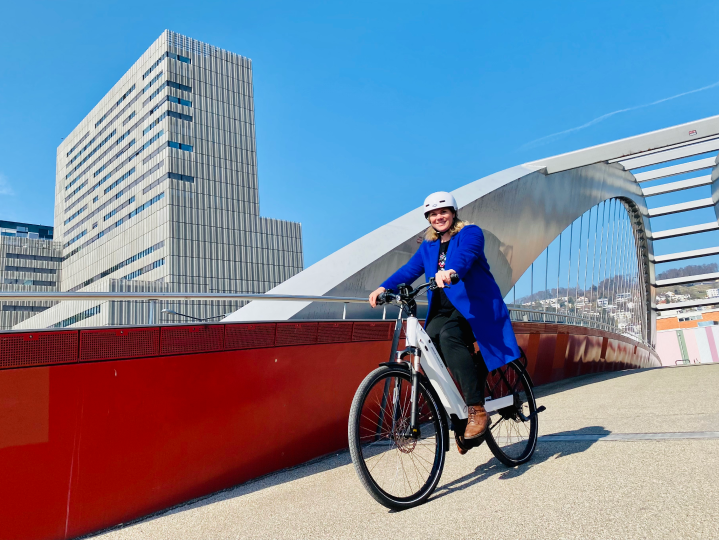News
Whitepapers
Standing still in traffic jams: how companies can lead a mobility turnaround
August 18, 2023
Whitepapers

In Switzerland, the topic of mobility has long since become a socially relevant issue. Cities struggling with traffic jams and are increasingly still being asked to initiate a net zero transport policy. These initiatives are indeed justified. In an international comparison, Switzerland has one of the most inefficient vehicle utilisation rates of all. An analysis by the Swiss Federal Statistical Office has shown that vehicles are stationary for an average of 23 hours a day and when in use, only about 1.6 seats are occupied. This corresponds to a combined load factor of only 1.6%. The increasing traffic jams on our roads – especially at rush hour – represent the result of this low utilisation.
Switzerland is indeed a country of car commuters. More than half of Swiss commuters use cars every day. This is relevant because just under a third of Swiss greenhouse gas emissions are attributable to car traffic. This means that both decarbonisation and increasing the capacity utilisation of mobility in Switzerland are likely to become important components of a sustainable economic strategy. Basically, the agenda for a transport turnaround in Switzerland is obvious.
The entire Swiss fleet of 4.7m passenger cars would have to be reduced. But change is rarely easy. The car has long since become a powerful symbol of our individuality, our self-determination and even our industrial culture. A crucial question arises from this realisation: What would make people voluntarily give up their own cars?
The answer should be obvious: In order to invite people to give up their own cars, the alternatives to owning a car must be expanded, improved and interconnected in a user-friendly way. “Use instead of own” is the motto. Mobility as a service is the term of the hour. It is not a question of whether public transport, shared e-bikes and e-scooters or car sharing would be a single alternative. It is much more about the digitally supported networking of a multimodal mobility chain with easy access. An interesting study by the consulting agency McKinsey confirms this potential: it shows that people’s willingness for shared use of vehicles has increased. The study also shows that not only the ownership of a vehicle is relevant, but also the access to vehicles. But who offers this access to Mobility-as-a-Service solutions?
Innovative companies like Lonza and Roche are already working hard on new mobility models. In order to reduce private motorised transportation, they rely on multimodal, shared vehicle fleets – from e-bikes to e-cars, and e-scooters – which are then shared among employees according to user needs. In the process, fewer and fewer employees drive their own cars to work and instead share a variety of different mobility options. For the shared vehicles, there is a central car park, a maintenance and cleaning service and a user-friendly app with which the desired vehicle can be reserved at any time, unlocked, and seamlessly billed after the journey. The benefits for the companies are obvious: costs go down as there are not as many cars to buy, parking demand drops sharply as more people use fewer cars, and overall mobility-driven greenhouse gas emissions go down, especially if the shared vehicles are e-cars or e-bikes.
In order to determine the benefits of the Urban Connect mobility platform, we conducted a survey among employees at a client’s premises to record their journeys and transportation behavior before and after the introduction of the Urban Connect platform.
Want to find out more about how the Urban Connect offering can revolutionize your company’s mobility offering? Fill in the form below and receive the full white paper in your mailbox!